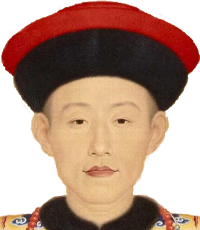Chinese pirates in Taiwan
Koxinga, 1624-1662 CE, known in China as Zheng Chenggong, was a scholar, a pirate and a Ming loyalist. He was born in Japan, the son of a Chinese father and a Japanese mother, but at the age of seven he moved to China and successfully sat for the imperial exams. When Manchu tribes began their takeover of the country in 1644, Koxinga continued to fight for the Ming cause. In 1656, partly helped by a big storm, he managed to destroy the Manchu navy and continued on to the island of Taiwan. In the eyes of the new Qing regime, he was an outlaw and a pirate.
In the early part of the seventeenth-century Taiwan was controlled by the Dutch East India Company. Undaunted by the power of the Europeans, Koxinga laid a siege on their major fortification, Fort Zeelandia, in the city of Tainan. Eventually defeating them in 1661, he established Chinese rule on the island for the first time. Yet only a year later, when conducting raids in the Philippines, he contracted malaria and died, only 37 years old. In 1683, the Qing army defeated Koxinga’s descendants, claiming Taiwan as a part of the mainland.
In today’s Taiwan there are temples dedicated to Koxinga and he is remembered as a hero and a as something of a saint. After 1949, when Guomindang, the Chinese nationalists, was defeated by Mao’s Communists, they, just as Koxinga, took refuge in Taiwan. And just like him, they regarded the island as a staging-post for a reconquest of the mainland. Yet Koxinga has been remembered in other ways too. Taiwanese people who want independence for their country emphasize that Koxinga effectively turned the island into an self-governing territory. The only Taiwanese who refuse to acknowledge Koxinga’s memory are the original inhabitants, the aborigines, which make up about two percent of the island’s population. As a result of Koxinga’s occupation they were pushed off the best agricultural land and the lucrative trade with the Dutch came to a halt.
When the leaders in Beijing insist that “Taiwan is an eternal part of the motherland,” they are wrong. First there were only aborigines on the island; then came the Portuguese, the Spaniards and the Dutch, and they were of course European. Only after that came the Chinese – and Koxinga, in the latter part of the eighteenth-century, was the first Chinese ruler on the island.

